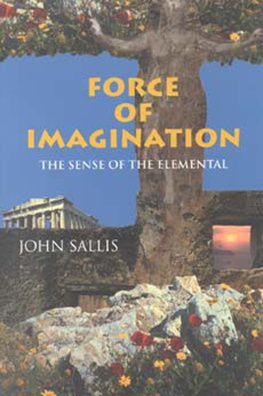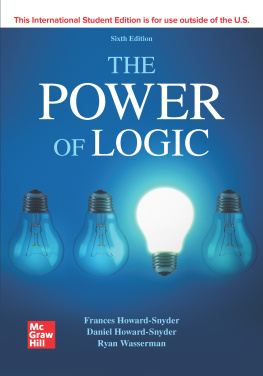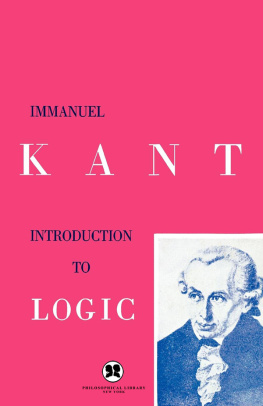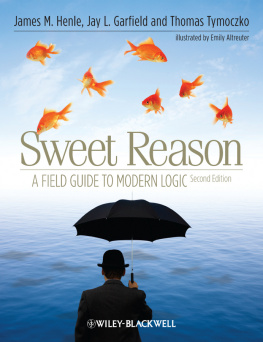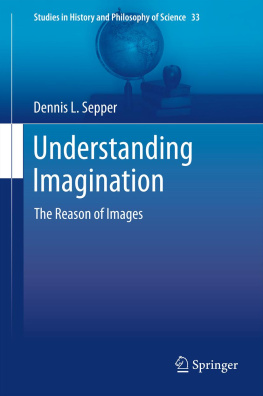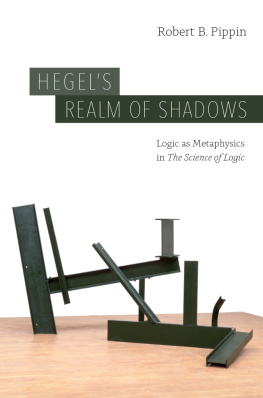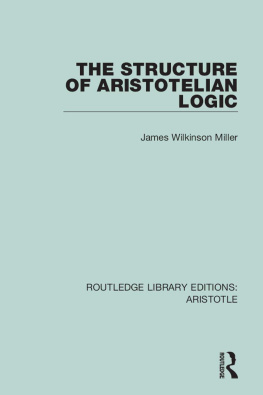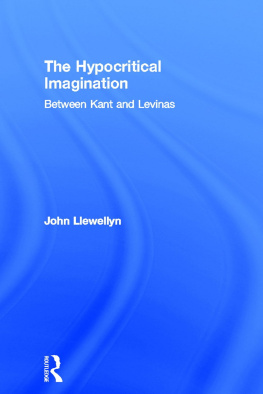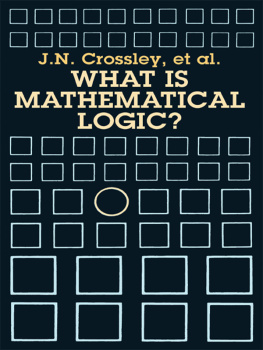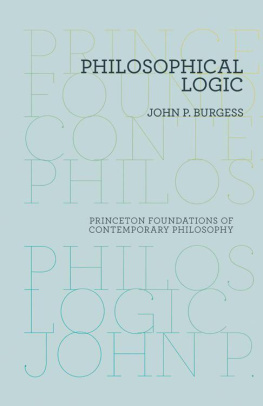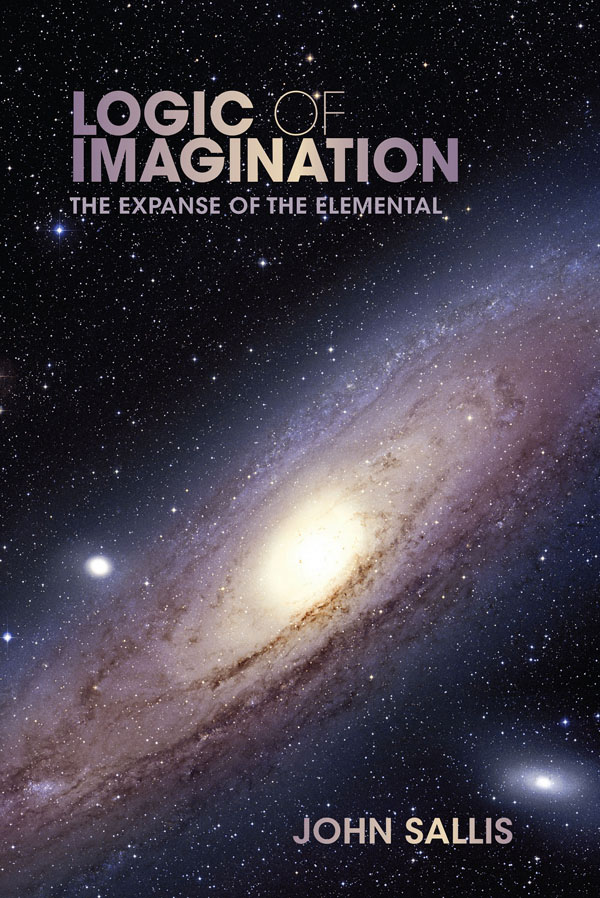LOGIC OF IMAGINATION
STUDIES IN CONTINENTAL THOUGHT
John Sallis, editor
CONSULTING EDITORS
Robert Bernasconi | J. N. Mohanty |
Rudolph Bernet | Mary Rawlinson |
John D. Caputo | Tom Rockmore |
David Carr | Calvin O. Schrag |
Edward S. Casey | Reiner Schrmann |
Hubert Dreyfus | Charles E. Scott |
Don Ihde | Thomas Sheehan |
David Farrell Krell | Robert Sokolowski |
Lenore Langsdorf | Bruce W. Wilshire |
Alphonso Lingis | David Wood |
William L. McBride |
LOGIC OF
IMAGINATION
THE EXPANSE OF THE ELEMENTAL
JOHN SALLIS
INDIANA UNIVERSITY PRESS
Bloomington and Indianapolis
This book is a publication of
Indiana University Press
601 North Morton Street
Bloomington, Indiana 47404-3797 USA
iupress.indiana.edu
Telephone orders 800-842-6796
Fax orders 812-855-7931
2012 by John Sallis
All rights reserved
No part of this book may be reproduced or utilized in any form or by any means, electronic or mechanical, including photocopying and recording, or by any information storage and retrieval system, without permission in writing from the publisher. The Association of American University Presses Resolution on Permissions constitutes the only exception to this prohibition.
The paper used in this publication meets the minimum requirements of the American National Standard for Information SciencesPermanence of Paper for Printed Library Materials, ANSI Z39.48-1992.
Manufactured in the United States of America
Library of Congress Cataloging-in-Publication Data
Sallis, John
Logic of imagination : the expanse of the elemental / John Sallis.
p. cm.
Includes bibliographical references and index.
ISBN 978-0-253-00589-2 (alk. paper)
ISBN 978-0-253-00590-8 (ebook)
1. Imagination (Philosophy) I. Title.
BH301.I53S26 | 2012 |
128.3dc23 | 2012005746 |
1 2 3 4 5 17 16 15 14 13 12
TO
JERRY
AGAIN, AND ALWAYS
CONTENTS
PLATES
1. Frans Hals, Portrait of Jaspar Schade (c. 1645)
2. Raphael, Madonna del Granduca (1504)
3. Raphael, Madonna della Seggiola (1514)
4. Paul Klee, Kettledrummer (1940)
5. Vincent van Gogh, Along the Seine (1887)
6. Vincent van Gogh, The Wheatfield (1888)
7. Vincent van Gogh, Seascape near Les Saintes-Maries-de-la-Mer (1888)
8. Caspar David Friedrich, The Wanderer above the Sea of Fog (c. 1818)
ACKNOWLEDGMENTS
I am grateful to the State University of New York Press for permission to include the text of my paper The Logic and Illogic of the Dream-Work, which originally appeared in Rereading Freud: Psychoanalysis through Philosophy, edited by Jon Mills (2004). Thanks also to the following museums and agents for permission to include images of artworks: National Gallery in Prague (Plate 1), Palazzo Pitti (Plates 2 and 3), Zentrum Paul Klee (Plate 4), Van Gogh Museum (Plates 5 and 7), Kunsthandel P. de Boer (Plate 6), Art Resource (Hamburger Kunsthalle) (Plate 8). I also want to thank Michael Benson for generously granting permission for his image of the Andromeda Galaxy to be used on the cover of this book; the image appeared in his book Far Out: A Space-Time Chronicle (New York: Abrams, 2009) and is based on a photograph made at the Palomar Observatory by Davide De Martin, to whom I also owe thanks.
I would like to express once again my gratitude to the Alexander von Humboldt Stiftung for continued support of my research.
For their generous and able assistance during production of this book I am grateful to Nancy Fedrow and Marina Denischik. Most of all, I am profoundly grateful to my editor and friend Dee Mortensen, whose continual support and extraordinary expertise have been invaluable.
Boston
January 2012
LOGIC OF IMAGINATION
PRECURSIONS
The first word belongs to the poet, the last word too, perhaps, if indeed there be a last word. For it is the poets word that has the utmost capacity to turn imagination disclosively upon itself, letting its trajectories be discerned and gesturing toward all the things that open to its evocation. Yet the most remarkable things that can be called forth by force of imagination are not in truth things at all but rather the elements, elemental nature in a sense akin to that which oriented early Greek thought. This sense is akin to that which comes into play, even still, when one speaks of being exposed to the elements. It is akin also to the sense that animates the title as well as much of the diction and action of Shakespeares last play.
I. THE TEMPEST
It all begins with the storm. Or rather, with the storm and its semantic double, with the storm itself as it is presented, represented on stage, and with the word that refers to the scene, either the very word storm or the Latinate synonym that entitles the play. The title alone suffices to pose this twofold, as the word prompts one to picture what the word names, calling up the image. The title and the twofold it broaches are repeated and extended in the initial stage directions, which prescribe that The Tempest begin with a stage representation of a tempest: A tempestuous noise of thunder and lightning heard.
So it does begin, in just this manner, showing on stage what is said in the title of the play. The first scene pictures Master, Boatswain, and the mariners aboard the ship, hastening to contend with the threat of the storm and cursed by the passengers, who belong to the party of Alonso, King of Naples. Little do they know that they are under the magical power of Prospero, former Duke of Milan, who twelve years earlier was overthrown by his treacherous brother Antonio, who at that time was aided by Alonso and now is among those aboard the storm-tossed ship. Little do they know that the island on which they are about to crash is the very spot where Prospero, with his young daughter Miranda, finally landed after being put out to sea and where in the intervening years they have lived with the company only of two very strange, not quite human creatures, Ariel and Caliban. As the scene aboard the ship draws to a close, the kings old councillor Gonzalo exclaims that they are splitthat is, ship-wreckedand his final lament that he would fain die a dry death leaves the unmistakable impression that all have perished in the stormy sea.
The title of the play extends its pertinence beyond the first scene, indeed extends it throughout. Though the storm subsides after the first scene, its threat remains. Later in the play the earthy monster Caliban and the tag-named jester Trinculo crawl under a gabardine in order to shelter themselves from the storm, which, because they hear thunder, they take to be coming again. When, much later, the airy spirit Ariel appears as a harpy to render the principal characters in the kings party mad, distracted, deprived of themselves, his appearance is accompanied by thunder and lightning andas the stage directions also prescribehe vanishes in thunder. Yet beyond these and other particular invocations, the play as a whole is determined by the tempest with which it begins: the entire sequence of scenes from Prosperos revelations to Miranda, to the two love scenes with Ferdinand, Alonsos son, to the scenes of the magical banquet and of the masque, to the final scene in which all are gathered before Prosperos cellthis sequence is the consequence of the storm with which the play begins.



